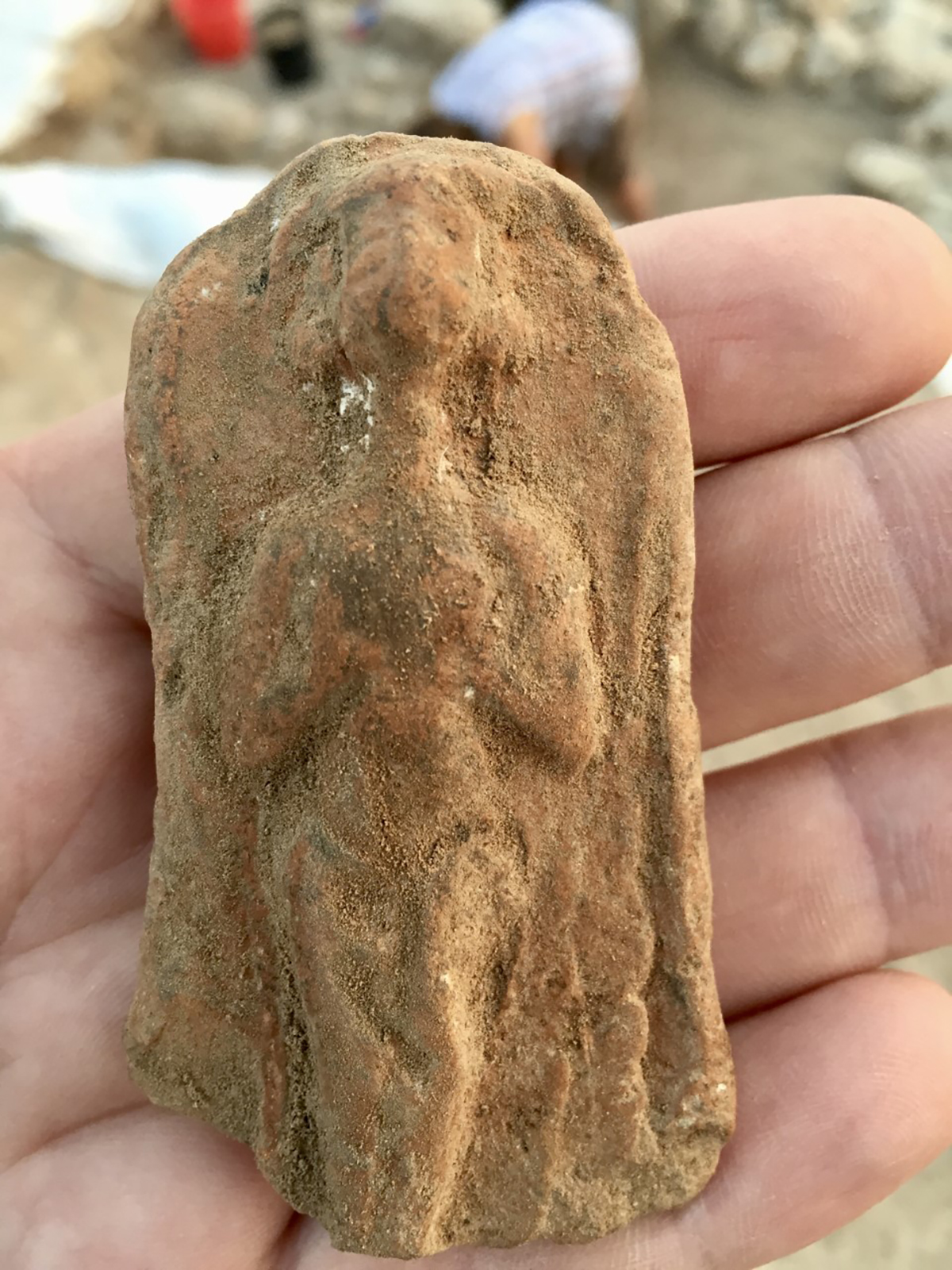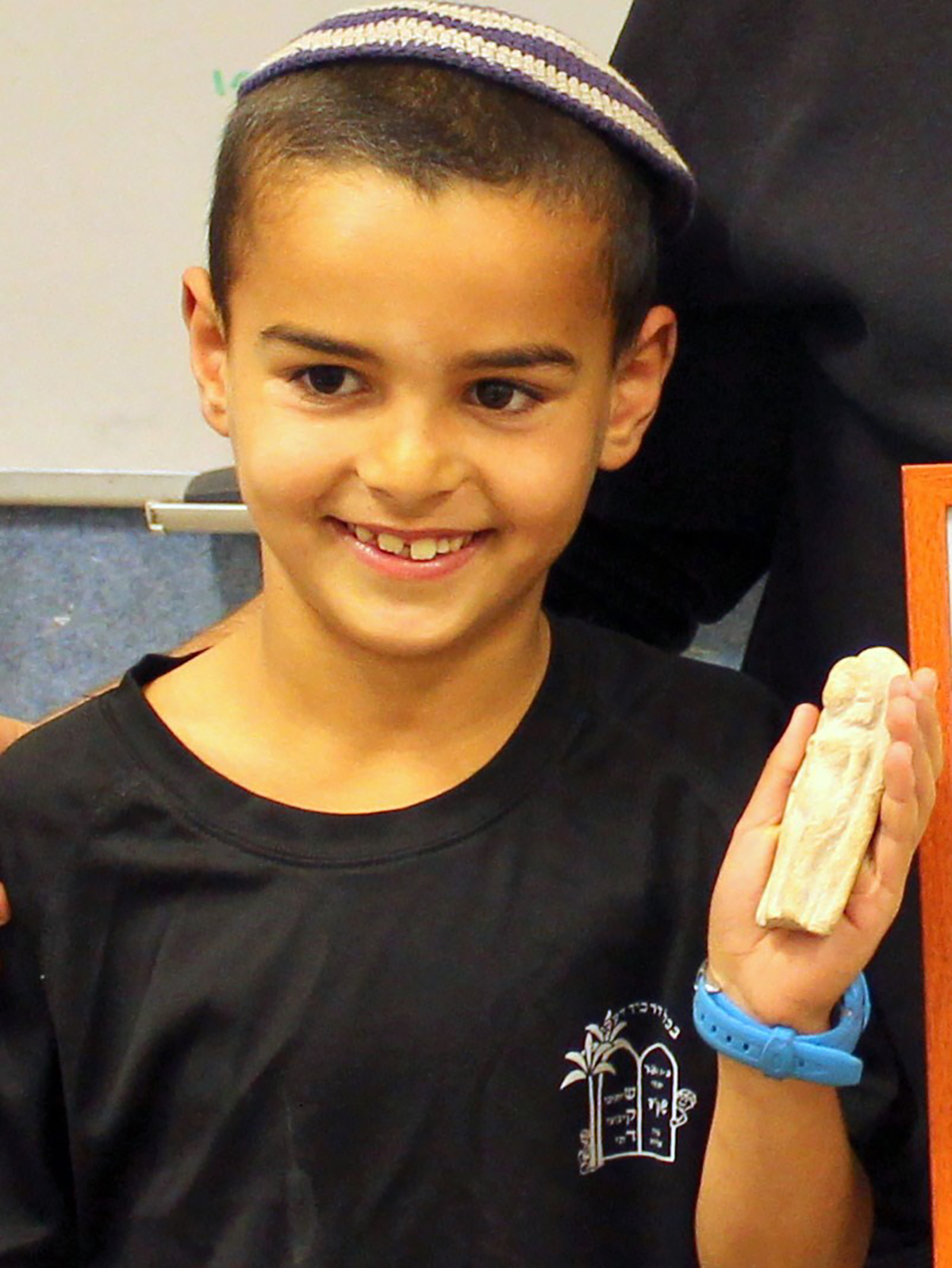
by Luke Chandler
Synopsis: Ancient and modern cultures share a common emphasis on sexuality, debasing a divine gift, corrupting character, and dishonoring God.
Canaanite Fertility Goddess
On a dig at biblical Lachish in 2015, a U.S. college student unearthed a clay image of a Canaanite fertility goddess just three feet away from me. (He found it in a spot I had been working only five minutes before!) The chief archaeologist graciously allowed me to take pictures of the 3,200-year-old idol just minutes after it was discovered. You can see one of those photos below.
How did we know it was an idol of a fertility goddess? Archaeologists have found many over the years, and we have come to recognize them. In the Ancient Near East, they are typically ceramic (fired clay) with the form of a woman. Clothing is absent, with the torso and pelvic regions emphasized in association with fertility. Sometimes the female image is a relief shown inside a frame, like the one shown here, but some fertility figurines take the three-dimensional form of a woman.
These kinds of images are what God was addressing in His covenant with Israel.
You shall not make for yourself a carved image, or any likeness of anything that is in heaven above, or that is in the earth beneath (Exod. 20:4, ESV).
Beware lest you act corruptly by making a carved image for yourselves, in the form of any figure, the likeness of male or female (Deut. 4:16).
Fertility goddesses were considered influential over the womb, making them especially popular among those desiring children. Someone wanting a child likely prayed to this figurine in a shrine or temple, or even at home. We often think of idols as gold or silver, but the majority would have been less expensive, making them affordable for the common person.
These kinds of idols were widespread in ancient Canaan before and during the Israelite habitation, with names such as Asherah or Ashtoreth. Folks like Joshua, Deborah, and Gideon would have been familiar with these even if they did not worship them. Unfortunately, many Israelites did pray to these little images.
They did not listen to their judges, for they whored after other gods and bowed down to them. They soon turned aside from the way in which their fathers had walked, who had obeyed the commandments of the LORD, and they did not do so (Judg. 2:17).
The people of Israel did what was evil in the sight of the LORD. They forgot the LORD their God and served the Baals and the Asheroth (Judg. 3:7).
By New Testament times, the Jews had thoroughly put away idols, but the rest of the world was awash in them. Many Christians were surrounded by fertility images every day in their communities. Paul describes the degradation that led to these representations:
Although they knew God, they did not honor him as God or give thanks to him, but they became futile in their thinking, and their foolish hearts were darkened. Claiming to be wise, they became fools, and exchanged the glory of the immortal God for images resembling mortal man and birds and animals (Rom. 1:21-23).
Archaeology helps us to “get inside the head” of ancient peoples—we see what they saw. We gain more of their perspective, which makes them more relatable to us. We understand their world, and in turn, recognize parallels to ours. Though our society does not pray to these kinds of idols, many people today worship sensual imagery for their own purposes. Devotion to sexual forms, whether through fashion, pornography, or other modes, takes honor belonging to God and offers it to created things. It exchanges the spiritual for the sensual, creating an earthly mindset and sin, including lust and the objectification of people who were created in the image of God. Let these ancient idols remind us of the dangers we face today.


